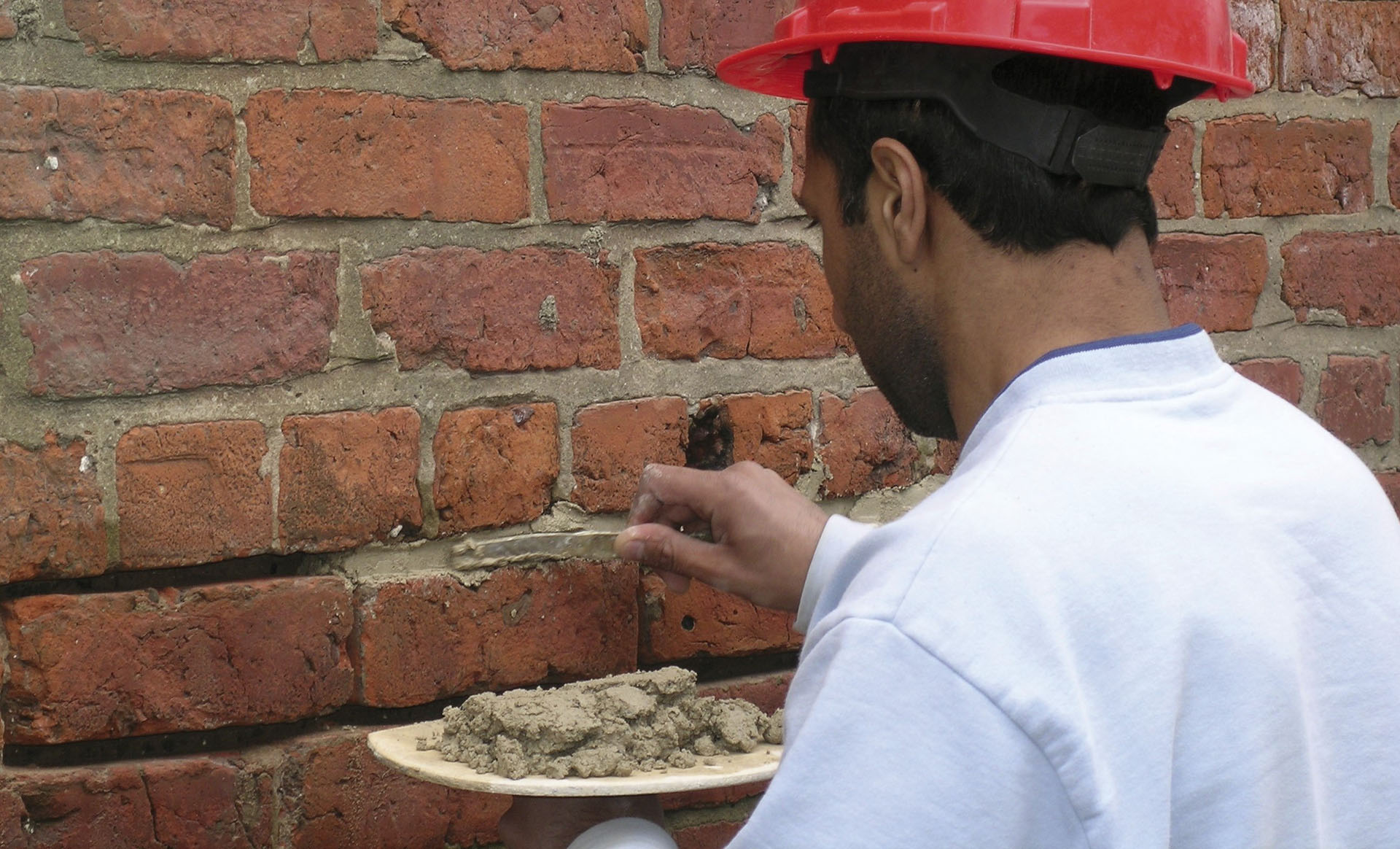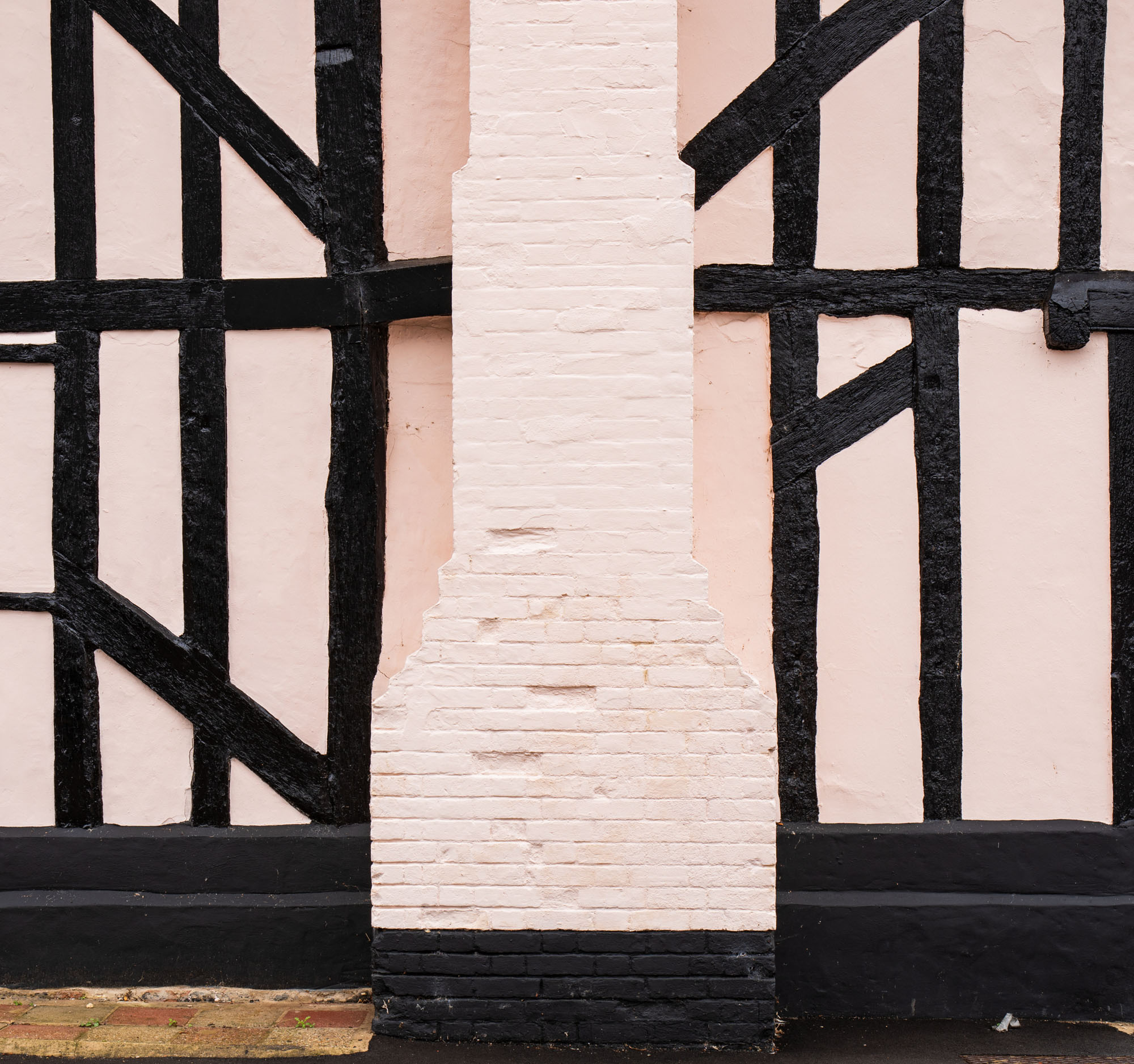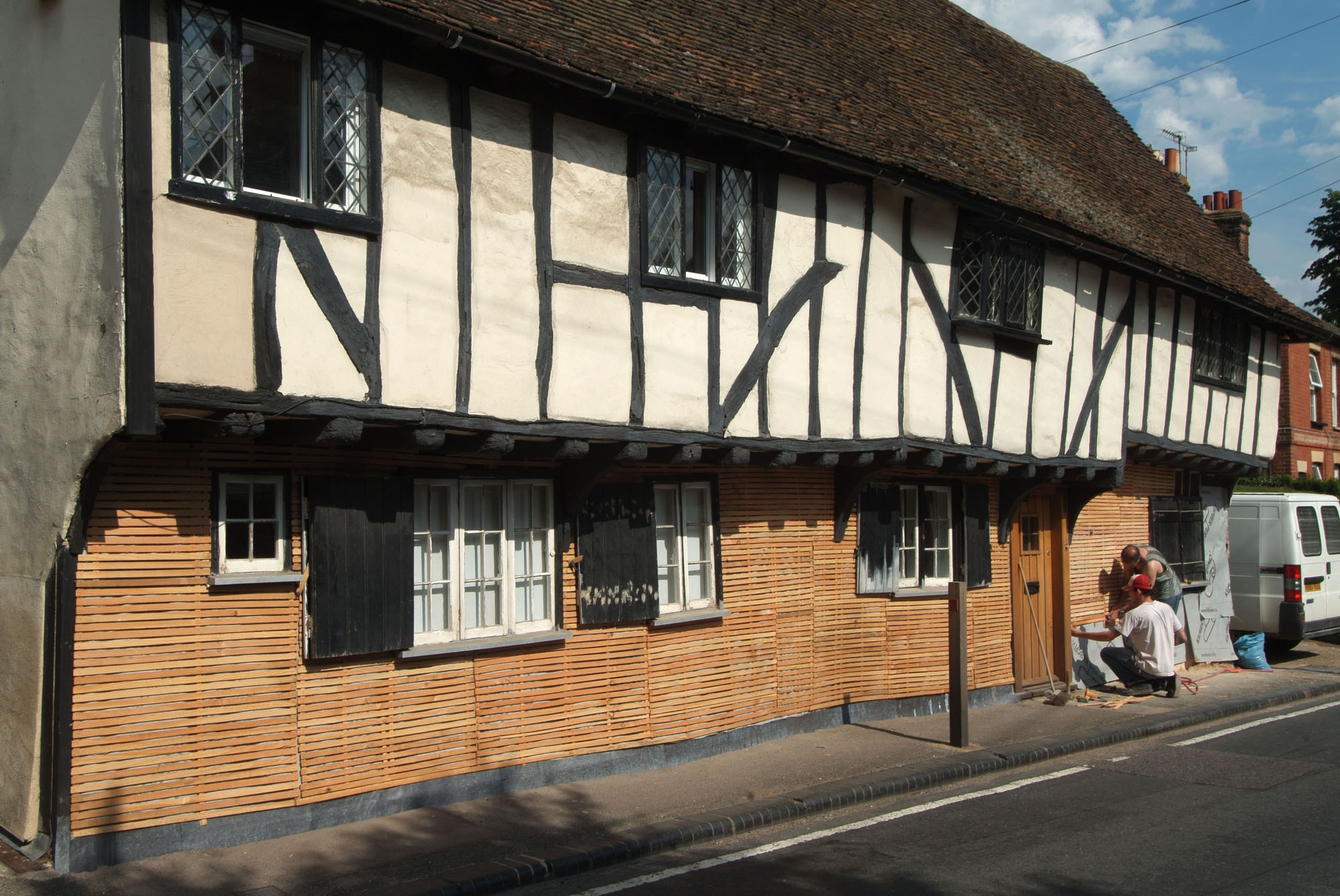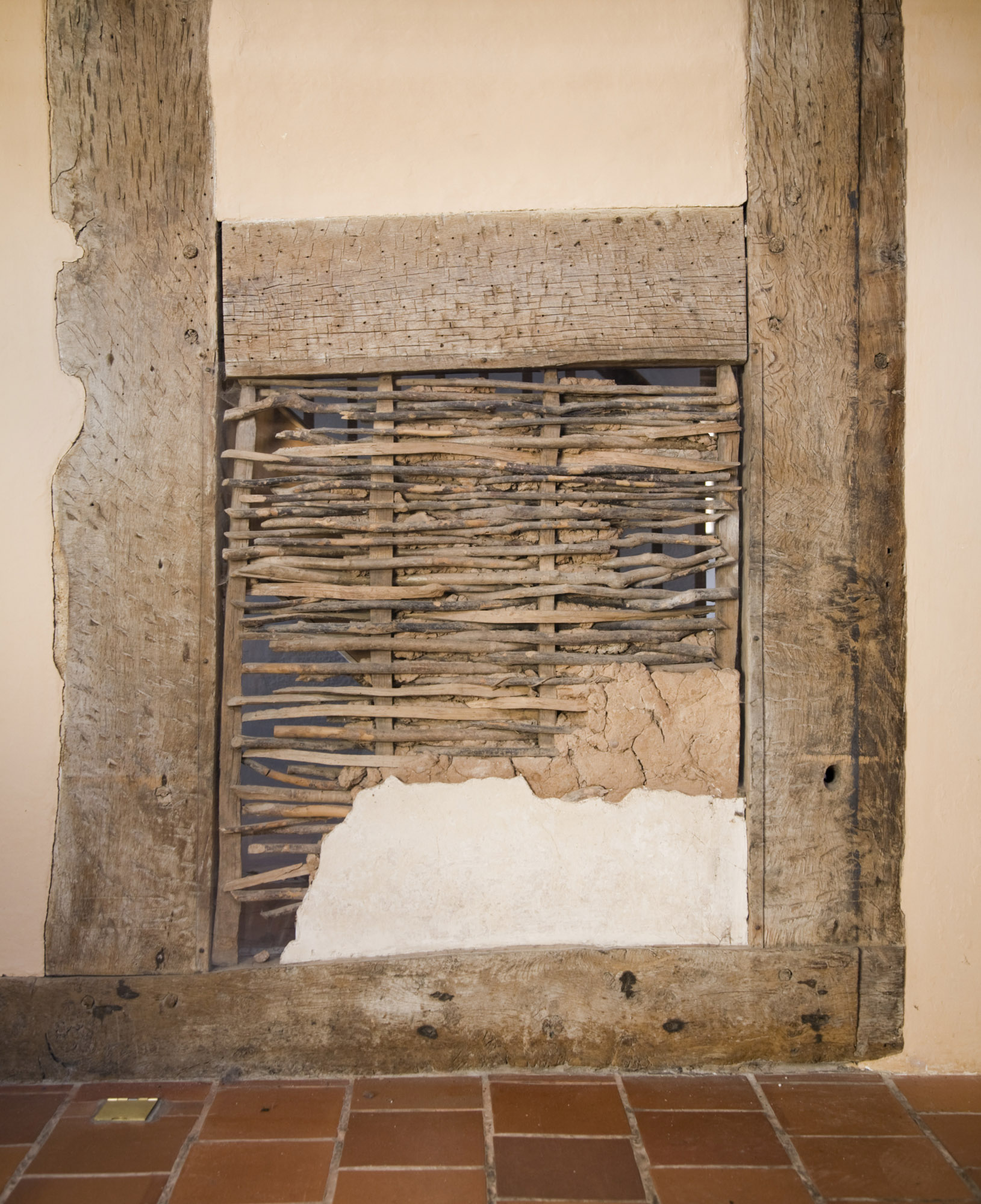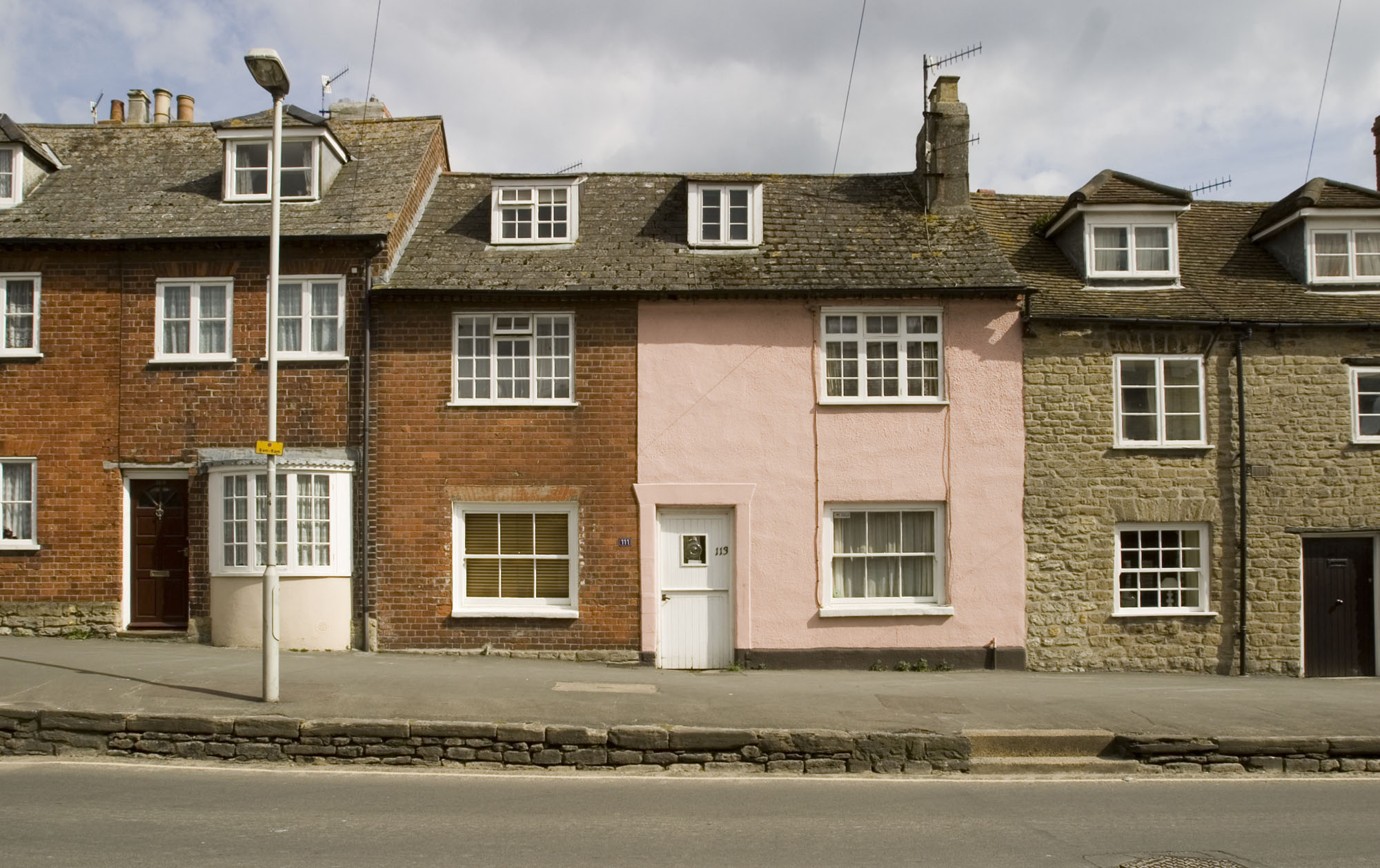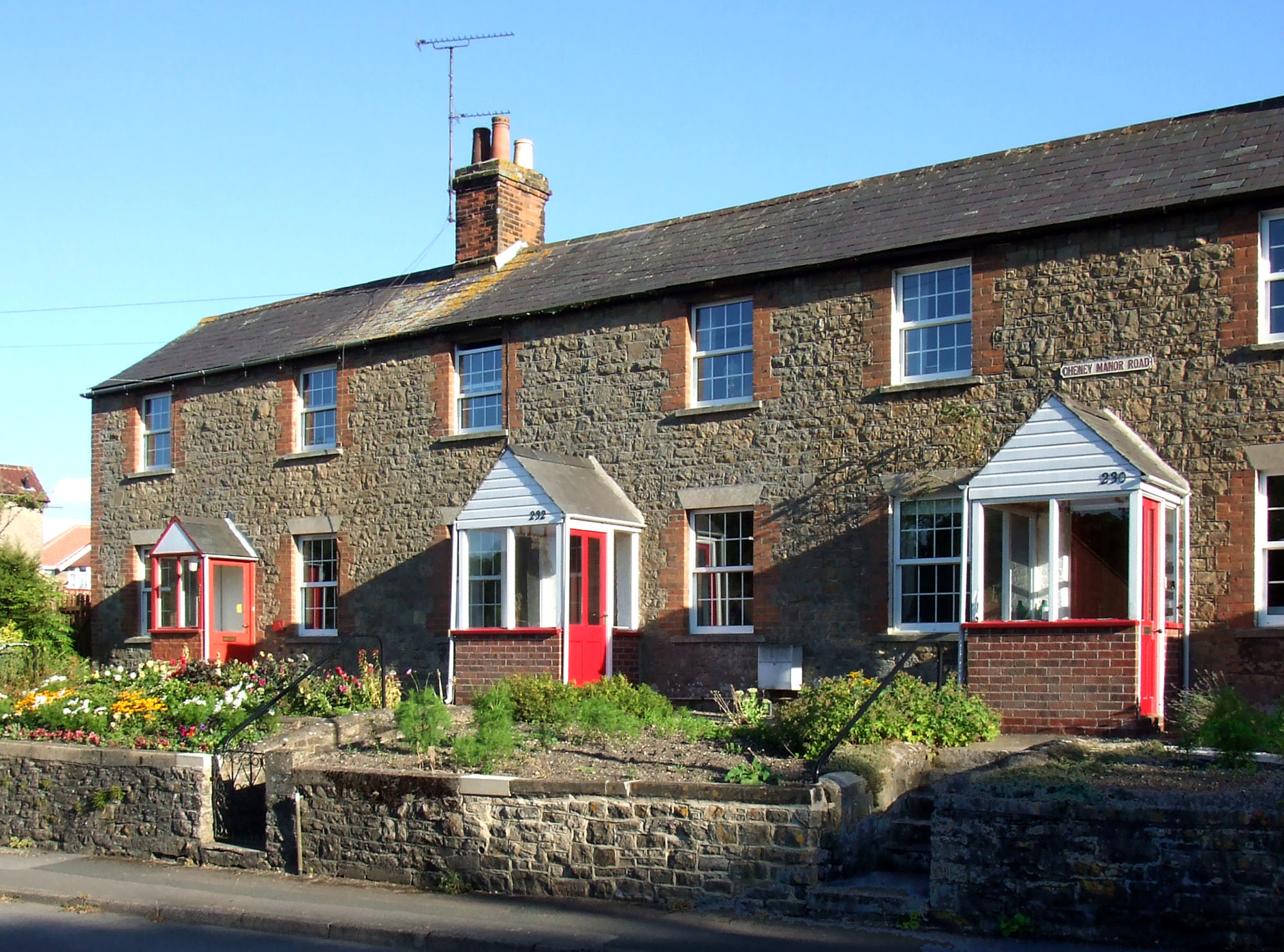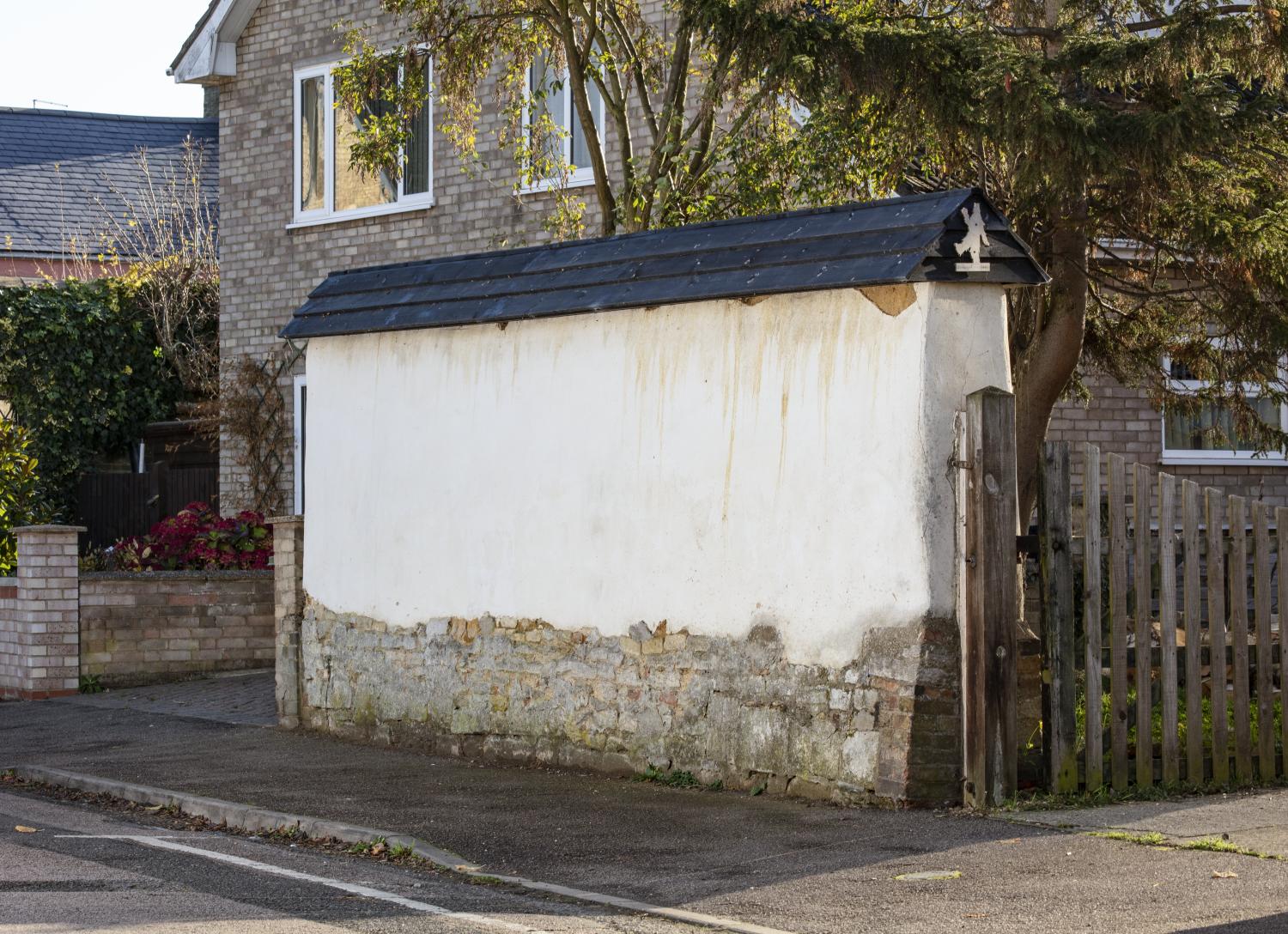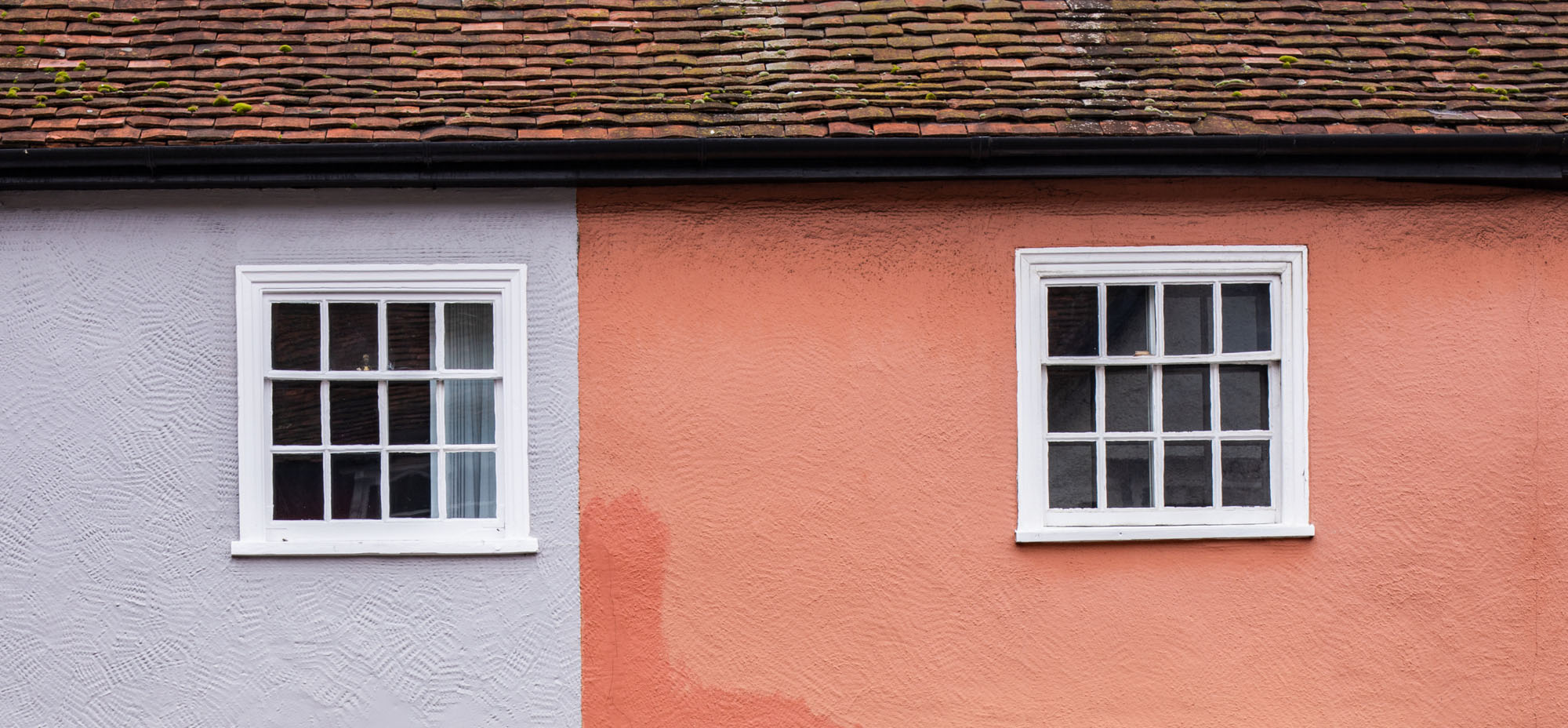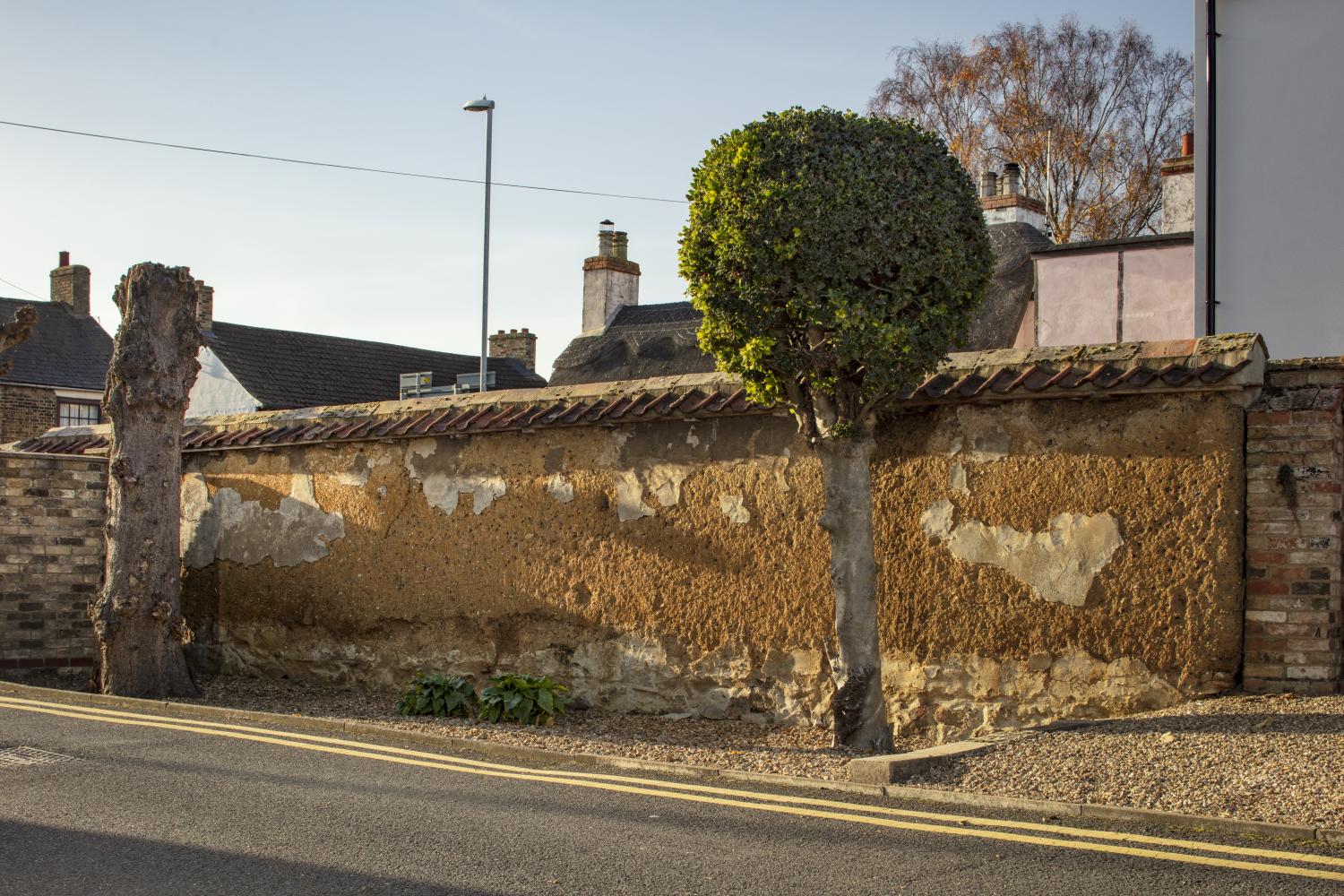Repairing Walls of an Older Home
Knowing what your walls are made of and how constructed is a good starting point for making effective repairs. This page introduces the traditional materials and techniques used to build older walls and offers tips for the repairs they may need.
Wall types and repair tips
Most houses of traditional construction are built with solid brick or stone, or a combination of the two. Some of our earliest houses used earthen structures or timber framing. These were cheaper and, in some areas, a more readily available alternative to masonry.
All wall types
Whatever wall type you have, always:
- Check and fix anything that is causing or exacerbating damp, such as a cracked drainpipe, an overflowing drain, or a lack of ventilation.
- Match the materials you use in any repair as closely as possible to those used in the original wall (see Use the right materials for more information). If you use modern impervious materials like cement-based fillings or impermeable coatings in repairs, the wall may decay even faster.
Solid brick walls
Bricks were originally made by hand using local clays and sands. The later machine-made bricks are more even in shape and colour. Brick sizes changed over time, find out why from this history of brick making.
Brick walls may need repairs for a wide variety of reasons. These include:
- Structural issues, where movement can cause walls to crack, bulge or lean or bricks to fracture
- Crumbling of very soft or under-fired bricks over time
- Damp walls. Bricks become saturated, and are then damaged through freeze/thaw action, or where salts come to the surface and cause flaking and decay
- Use of inappropriate mortars or renders
Steps to take
If cracks are appearing in your walls causing it to crack, bulge or lean, or stones to fracture, seek advice from a structural engineer.
If you need to make repairs to old brick walls, it's best to get advice from a professional with experience of older masonry buildings.
Most repairs are likely to entail some repointing, or possibly the removal and replacement of some of the bricks. It's rare that a whole wall will need to be rebuilt.
Make sure you use appropriate materials to repair your building. Matching new and existing bricks is important when carrying out repairs, not only for the visual effect, but also to ensure they will weather in a similar way. Although there are far fewer brick companies around today, many of the locally produced bricks are still available.
Cavity walls
Cavity walls can suffer from many of the same problems as solid brick walls. The original 'hollow walls' were developed to provide as much protection from the elements as possible. Consisting of two separate leaves of brickwork with space between them, held in place with metal ‘ties’, they became known as cavity walls.
Older cavity walls are particularly susceptible to structural stability issues, as early wall ties were not galvanised so they tend to rust and lose their ability to hold the two leaves of brickwork together or cause horizontal joints to open as they expand.
Steps to take
If cracks are appearing in your walls causing it to crack, bulge or lean, or stones to fracture, seek advice from a structural engineer.
If you need to make repairs to old brick walls, it's best to get advice from a professional with experience of older masonry buildings.
Most repairs are likely to entail some repointing, or possibly the removal and replacement of some of the bricks. It's rare that a whole wall will need to be rebuilt.
Make sure you use appropriate materials to repair your building. Matching new and existing bricks is important when carrying out repairs, not only for the visual effect, but also to ensure they will weather in a similar way. Although there are far fewer brick companies around today, many of the locally produced bricks are still available.
Stone walls
There are two types of preparation for stone used in housebuilding:
- Rough uncut 'rubble' stone
- Dressed cut 'ashlar' stone
Often the two were combined, with rubble stone used for the wall core and ashlar stone used for the facings.
Stone suffers from many of the same decay problems as brick.
Steps to take
If cracks are appearing, get advice from a structural engineer. If you need to make repairs to old stone it's best to get advice from a professional with experience of older buildings.
Try to match new stone with the existing material to make sure that repairs don't affect the functionality or appearance of your home.
Stone for building was very much a locally sourced material before national transport systems were developed. This gives certain areas of the country a particular character, such as the honey-coloured villages of Cotswold stone.
Timber-framed walls
Walls made of timber frames, often assembled on the ground before being lifted into place, were infilled with a mud-based daub mixture onto a wattle framework backing. Later these panels were often replaced with brickwork, and sometimes the whole frame was rendered with a lime render and limewash.
The timber frame method of house construction has existed for centuries. Timber was often a cheaper alternative to masonry and in certain parts of the country more readily available. Timber-framed houses are often slightly crooked as a result of movement over the years. This does not automatically mean that the house is about to fall down, and crookedness can contribute to a building's character.
Timber can be impacted by moisture leading to mould growth, rot and infestation by timber boring insects.
Excessive moisture in the timber joints can ultimately lead to structural issues if not dealt with at an early stage. The infill panels are also vulnerable to damp.
Steps to take
If your house is suffering from damp or rotting timbers you should seek advice from a specialist with experience of older timber framed buildings in your area, this could be a carpenter, timber specialist or professional advisor. Timbers or parts of timbers may need to be strengthened or, as a last resort, replaced.
Earth walls
Earth walls are a lot less common than the other forms and are found predominantly in rural areas. The method has a variety of regional names: cob, mud, clay dabbins, rammed earth, wychert. Clay lump and chalk lump are similar techniques in which earth or chalk is made into unburnt blocks that are laid in clay-based or lime mortars.
All forms of earth walling are susceptible to water penetration, particularly when exposed to severe weather. They were often plastered with a protective coating of lime render. If the render is not maintained the wall itself becomes very vulnerable to decay.
Steps to take
Check and fix anything that is causing or exacerbating damp. Get advice from a professional with experience of earth walls in your area.
It's important to match the materials you use to make repairs as closely as possible to the materials used in the original wall (see Using the right materials for more information). If you use modern impervious materials it will only cause more damage as any moisture gets locked in.
Render and stucco
External renders and stucco are susceptible to cracking, allowing damp into the backing wall. The maintenance of these materials can be quite onerous.
External renders have been in use for hundreds of years. Early forms were usually lime-based mixes applied as a two- or three-part coating and were often used to cover timber frames. Later, in the 18th and 19th centuries, they were used to make brickwork look like stone. Pebbledash, also known as roughcast, is a form of stucco that incorporates gravel.
Gallery
Please click on the gallery images to enlarge.
Get the expert help, materials and permissions you need
If you want to make repairs to the walls of your home you may need permission and should seek advice from your local planning authority. This is especially important if your home is listed or in a conservation area.
Make sure you use appropriate materials to make repairs to your home. Matching new and existing materials is important when carrying out repairs, not only for the visual effect, but also to ensure they will weather in a similar way.
-
Where to find specialist help
If you are employing a contractor or a professional adviser, they will need the expertise and experience of working with old buildings. This page will help you find and choose professionals with the skills you need.
-
Use the right materials
When considering what materials to use for repair work it is important to understand how your house was built.
-
Check what permissions you may need
If you want to make repairs to your home you may need permission and should seek advice, especially if your home is listed or in a conservation area.
-
Who do I contact?
This page describes the key points of contact and sources of advice if you are thinking of making changes to your home.

